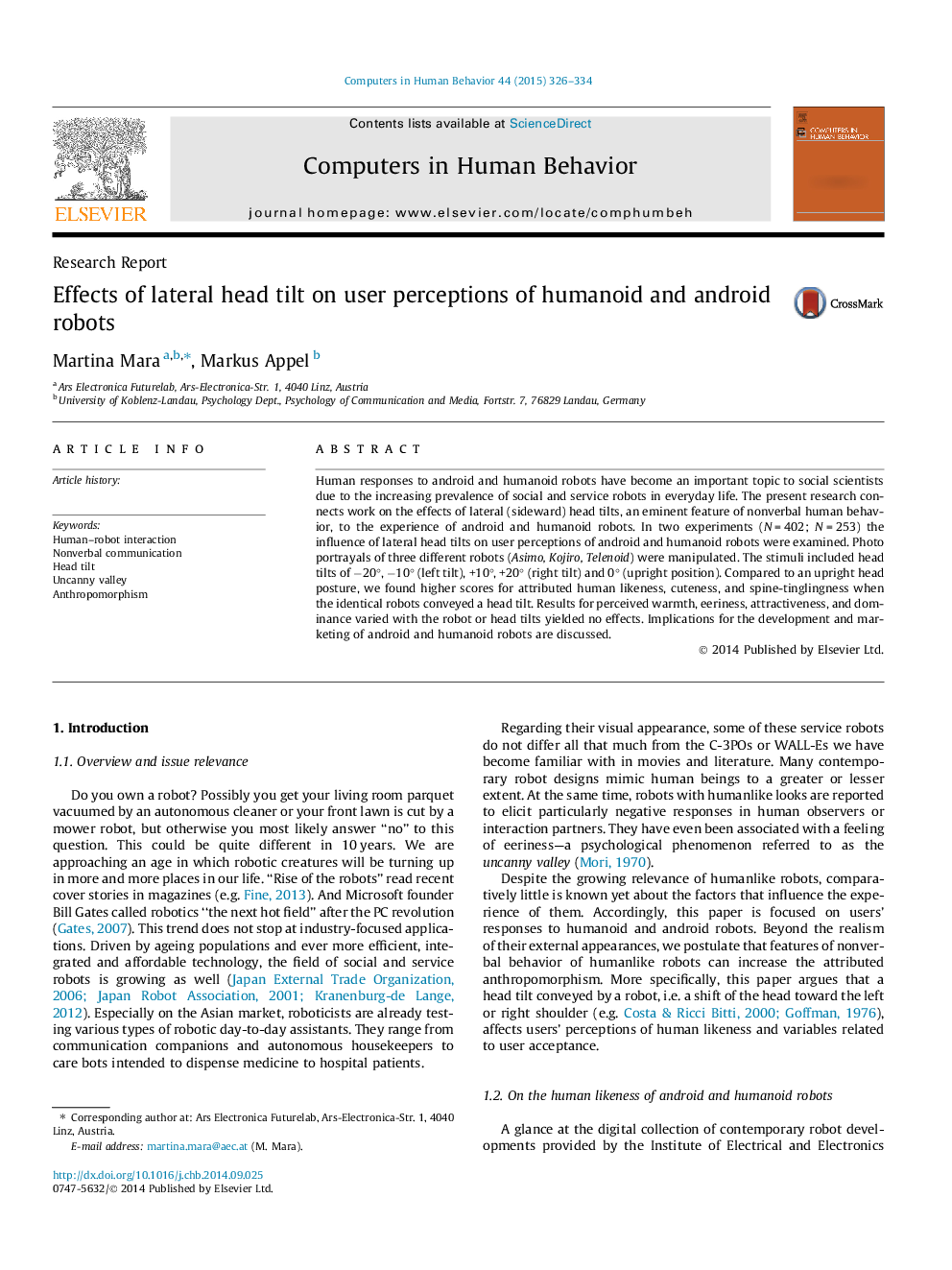| Article ID | Journal | Published Year | Pages | File Type |
|---|---|---|---|---|
| 6838645 | Computers in Human Behavior | 2015 | 9 Pages |
Abstract
Human responses to android and humanoid robots have become an important topic to social scientists due to the increasing prevalence of social and service robots in everyday life. The present research connects work on the effects of lateral (sideward) head tilts, an eminent feature of nonverbal human behavior, to the experience of android and humanoid robots. In two experiments (N = 402; N = 253) the influence of lateral head tilts on user perceptions of android and humanoid robots were examined. Photo portrayals of three different robots (Asimo, Kojiro, Telenoid) were manipulated. The stimuli included head tilts of â20°, â10° (left tilt), +10°, +20° (right tilt) and 0° (upright position). Compared to an upright head posture, we found higher scores for attributed human likeness, cuteness, and spine-tinglingness when the identical robots conveyed a head tilt. Results for perceived warmth, eeriness, attractiveness, and dominance varied with the robot or head tilts yielded no effects. Implications for the development and marketing of android and humanoid robots are discussed.
Related Topics
Physical Sciences and Engineering
Computer Science
Computer Science Applications
Authors
Martina Mara, Markus Appel,
